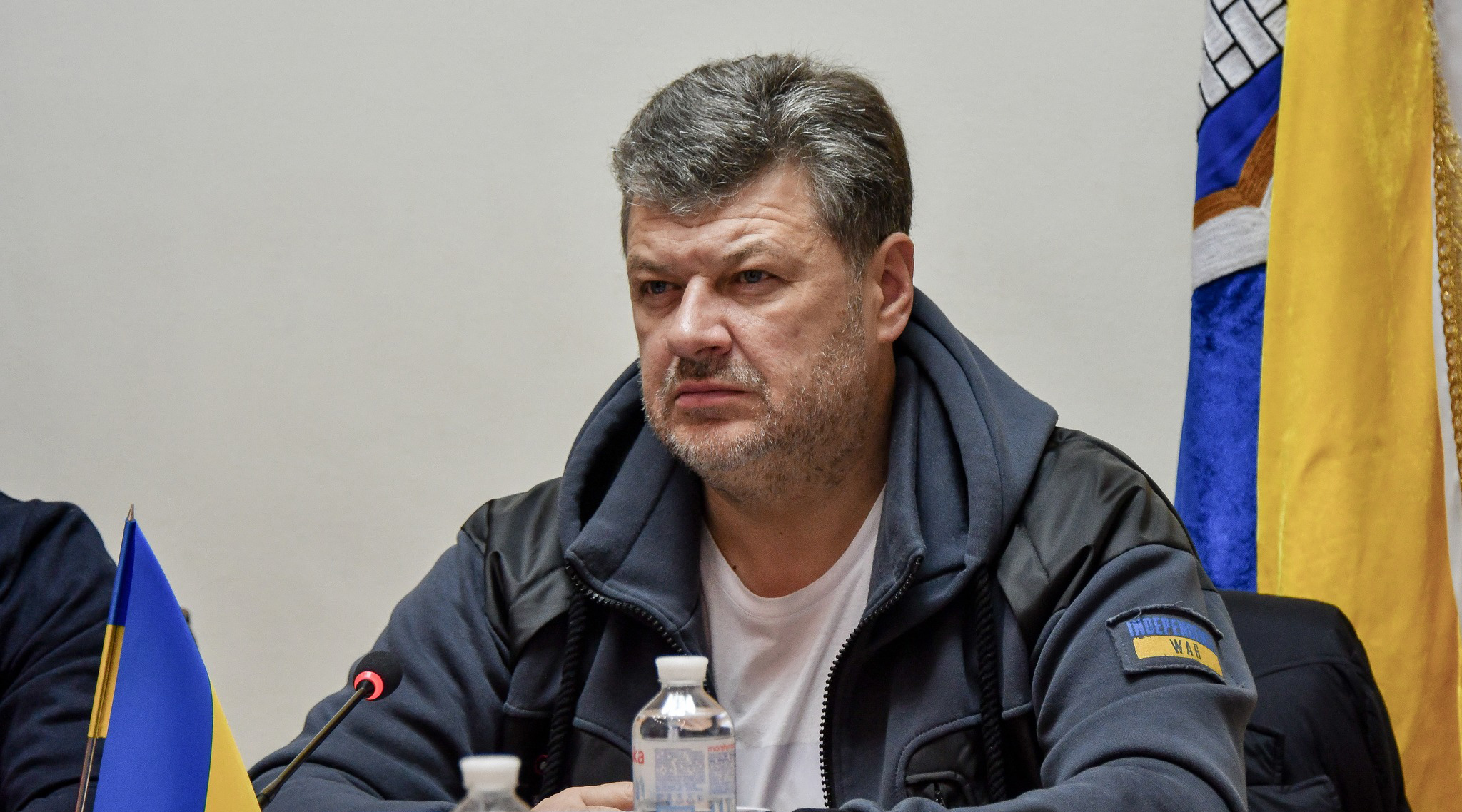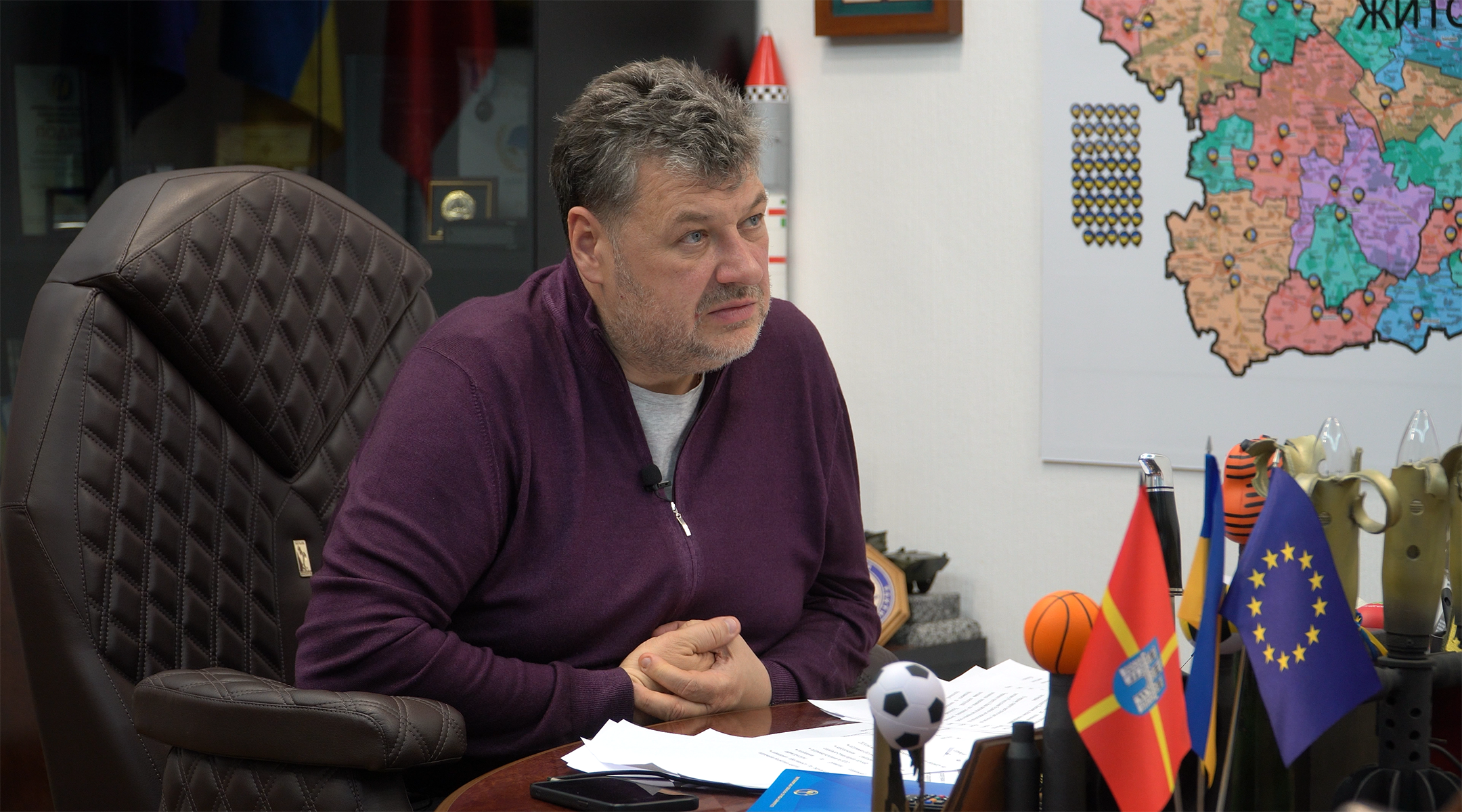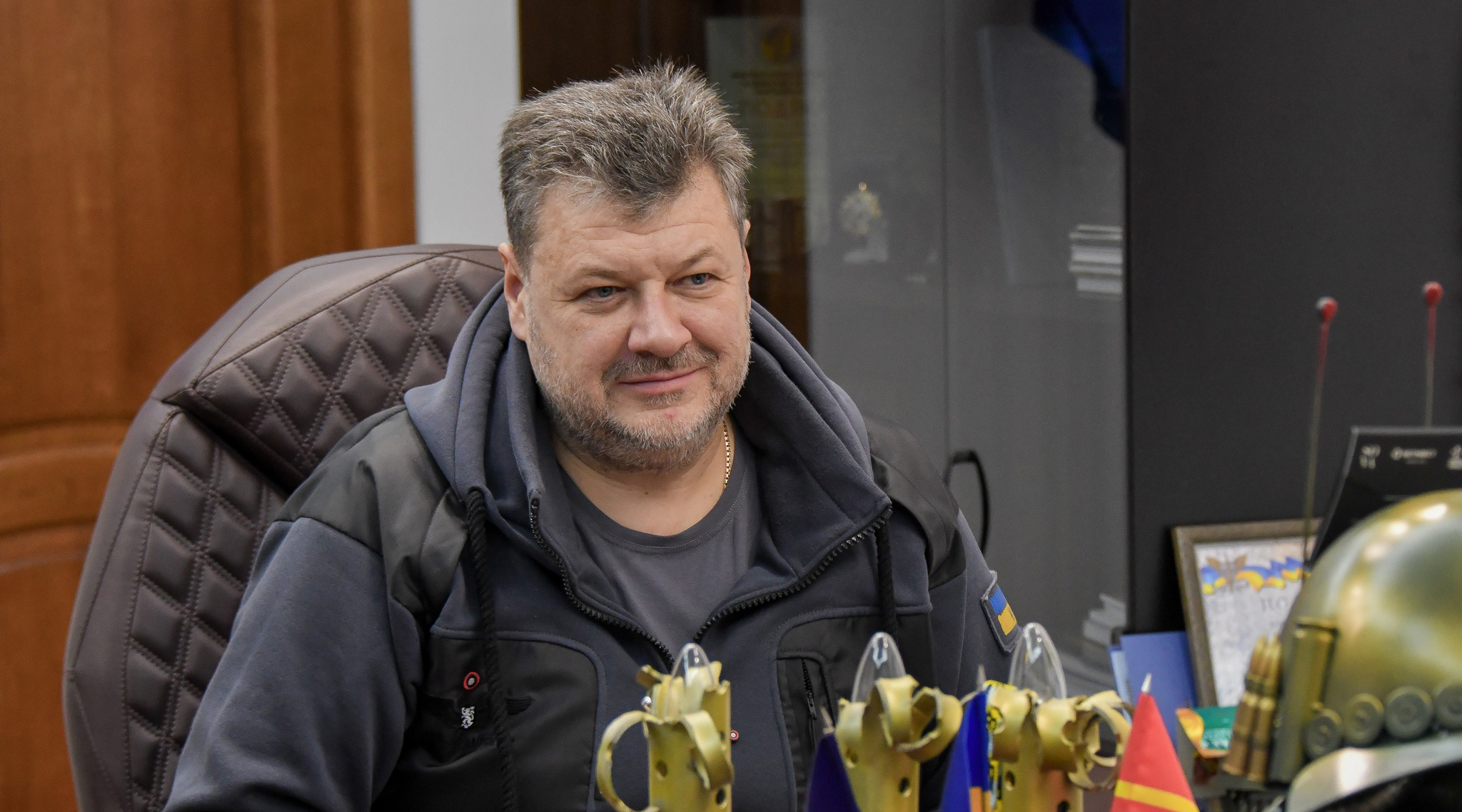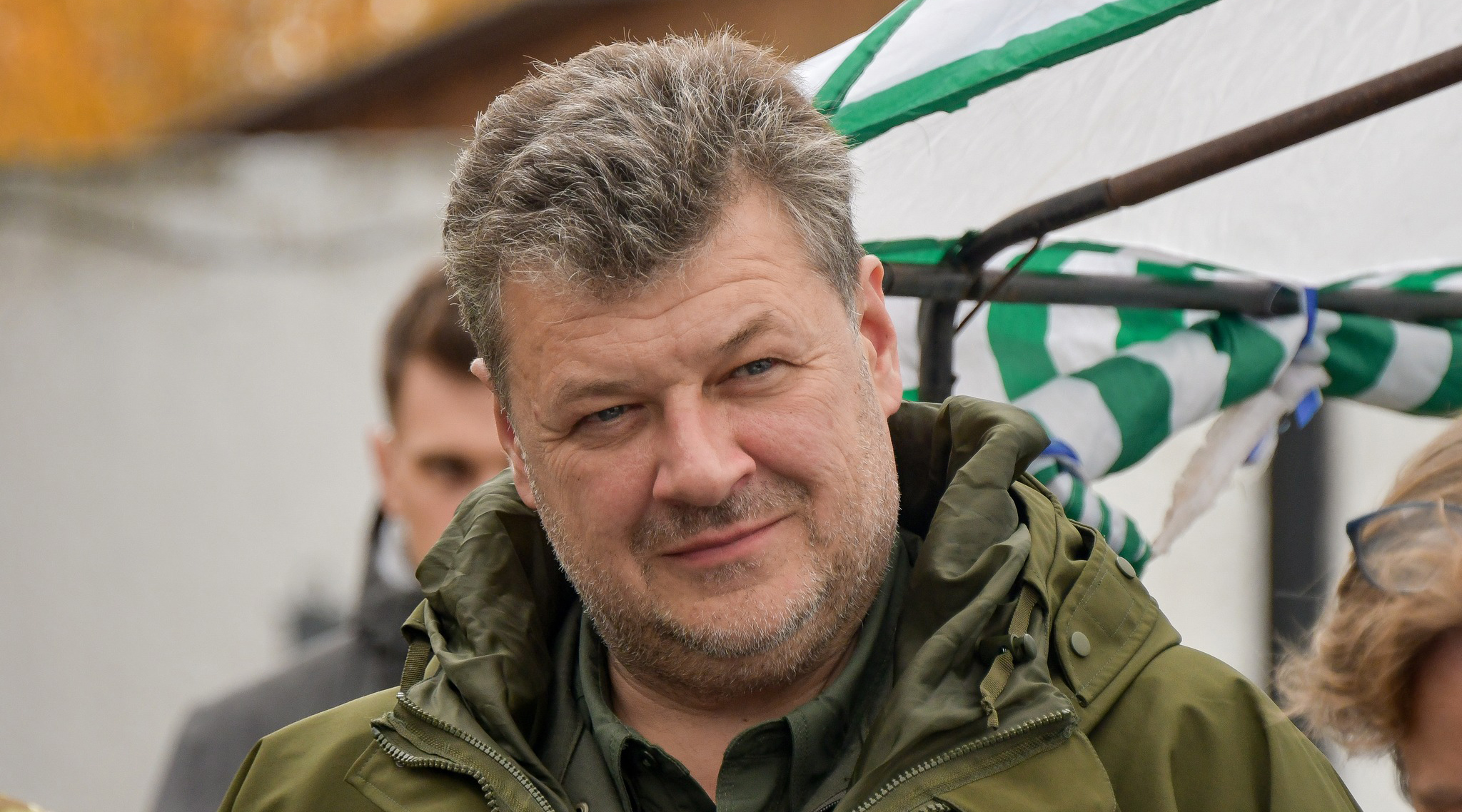Minefields remain the biggest problem in the northern part of Zhytomyr Oblast after it was liberated. However, all the bridges destroyed this year have already been rebuilt in the Narodychi community, some of whose settlements were under Russian occupation. They also conducted Ukraine’s first humanitarian forest demining.
Vitalii Bunechko, head of the Zhytomyr Oblast Military Administration (OMA), spoke in an interview with Ukrinform about the further reconstruction of Zhytomyr Oblast, the support of international partners, strengthening of air defence, and business operations in a full-scale war.

MORE THAN HALF OF THE DAMAGED HOUSES REPAIRED
- Vitalii Ivanovych, please tell us about the situation in the Narodychi community settlements de-occupied in spring 2022. What are the problems that remain unsolved there at present?
- Nine settlements of the Narodychi community were occupied almost from the beginning of the full-scale war. The remaining territory suffered from airstrikes. Sometimes, when the Russian planes were returning from the bombing of Zhytomyr and other towns, they would drop ammunition there to return without it to their bases.
As soon as the settlements in Zhytomyr Oblast were freed from occupation, we immediately set about restoring them. Our first priority was the reconstruction of housing, but the most challenging task was to restore the infrastructure. The Russians destroyed four bridges that provided unhindered logistics between at least ten settlements in the community.
Thanks to the United24 project, we have restored all these bridges this year. We reached an agreement with the State Transport Special Service on the construction of these bridges. This made it possible to quickly return to normal life in the de-occupied settlements. Without the bridges, people had to make a 50-kilometre detour in spring when there was a flood, which made medical care and food deliveries much more difficult. We are now looking at re-establishing the bus route to these settlements.
The Narodychi community is returning to normal life. However, but the issue of mine danger remains, as there are large areas that have been mined.
I would like to give you an example. At a recent meeting where we discussed the need to shoot wild animals entering settlements, the military strictly forbade this in the Narodychi community, precisely because of the mines. The echoes of the occupation will be felt for a long time.
A humanitarian mine action project has already been carried out in the community’s forests. We are currently negotiating demining with GK GROUP and its American partner Tetra Tech.
- How many of the facilities in the region that have been damaged by shelling have already been repaired? What are the funding sources?
- Our region has suffered 116 rocket and bomb attacks since the beginning of the full-scale war. As a result, 4,800 facilities have been destroyed or damaged. 200 of them cannot be restored. With UAH 270 million allocated from the Destroyed Property and Infrastructure Restoration Fund, the regional and municipal budgets, we have already restored over 2,700 facilities. The work is still ongoing.
The government’s eRecovery programme is being actively used by the region’s residents. A total of 678 applications for damaged property were registered in the region as of 15 December. Committees have approved UAH 51.9 million in payments for restoring 500 houses and flats. Furthermore, UAH 36.9 million has already been transferred to the card accounts of the owners of 447 damaged houses.
At the same time, the bank processed and submitted 58 applications for payments totalling UAH 1.5 million. One application for compensation totalling UAH 17.9 thousand is currently under consideration.

PARTNER SUPPORT FROM ESTONIA
- How are the international partners contributing to the reconstruction of the region?
- First, I would like to focus on the assistance provided by Estonia, one of the countries we partner with. Thanks to Estonia, a kindergarten in Ovruch has already been built and is now in operation, and we are planning to open its second stage in early January. We have also been working together to reconstruct a bridge in Malyn. The project cost UAH 113 million. Almost half of that was money from Estonia. This allowed us to save money and announce a tender to rebuild a bridge in the Olevsk community, which crosses the Ubort river.
We hope to rebuild Lyceum No. 25 in Zhytomyr after successful negotiations with Portugal.
Zhytomyr Oblast is actively cooperating with UNICEF. We are talking about equipped shelters in schools and hospitals, STEM laboratories, and an early childhood care project initiated in Zhytomyr Oblast and extended to other regions.
We are also working with the United Nations Development Programme (UNDP) within the ECHO4SCHOOLS-UA project titled ‘Repair/modernisation of schools in war-affected regions’. The aim is to repair and modernise 31 schools and provide them with furniture and equipment. In particular, repairs costing around UAH 100 million have already been completed at nine schools in the Zhytomyr community.
Since the full-scale war began, we have raised about UAH 1 billion for various projects in Zhytomyr by working with international partners.
We’ve recently entered a new phase of cooperation with UNICEF and the German state-owned KFW Bank. Under the memorandum signed, Zhytomyr, Andrushivka, Korosten, Zvyagel, Khoroshiv, and Olevsk communities received UAH 265 million. The funds will be used for quality water supply, child protection and social support, youth development, education, and health care.
- On the OMA website, it was announced that one of the sources for rebuilding the shelled lyceum in the village of Kirdany would be confiscated Russian assets. What other institutions in the region will benefit from these funds?
- A total of six institutions were financed by the Fund for the Liquidation of the Consequences of Armed Aggression. One of its sources is the proceeds of the forcible seizure of property owned by the Russian Federation in Ukraine. In addition to the lyceum in Kirdany, these include a lyceum in Korosten, Zhytomyr Regional Herbachevskyi Clinical Hospital, the Regional Children’s Hospital, the Security Centre in Velyka Khaicha, and preparing design specifications and estimates for a dormitory for displaced persons in Zarichany. The total amount allocated to these projects is UAH 852 million.
- How will projects aimed at sheltering IDPs in Zhytomyr Oblast be implemented?
- Together with international partners, we are implementing a project in Zhytomyr to build a housing complex for IDPs. In the coming year, 40 modular houses from the Red Cross will be delivered to the regional centre. In Zarichany, the Fund for the Liquidation of the Consequences of Armed Aggression will build a dormitory for IDPs.
We have also applied to the Ministry of Reintegration to rebuild five more compact shelters for IDPs.

54 MOBILE FIRE TEAMS CREATED IN ZHYTOMYR OBLAST
- How well is the region prepared for a possible enemy attack on the energy infrastructure facilities? How did you manage to strengthen the air defence system?
- Because Shaheds fly over Zhytomyr Oblast, we hear air raid alarms almost every night. We are strengthening our air defence systems because the enemy may attack the energy infrastructure.
We have raised UAH 108 million from local communities to buy pick-up trucks and equipment for 54 mobile fire teams. A total of 21 vehicles are already on combat duty, and a further 33 are due to be delivered to the military unit by the end of the year.
In addition, machine guns have been given to the volunteer units of our territorial communities. They are now being trained and will go out to fight Shaheds.
In case the enemy uses cruise missiles, I’d like to assure you that we have prepared surprises for them. We are constantly on the lookout for these things and are in the process of building them up.
- How is the region’s economy running in a large-scale war? You have recently released information that three industrial parks have been built in Zhytomyr Oblast and that four more are in the planning stage. Why is only one of the three in operation, the one in Korosten?
- Our experience in Korosten shows that the successful launch and further operation of an industrial park can be ensured by a big investor who brings together related industries. This is how Korosten’s woodworking cluster was created. Around UAH 300 million has already been invested in developing the industrial park. More than 2,000 jobs have been created, with an average salary of UAH 18,000.
There are no such investors yet in Zhytomyr and Malyn. We had preliminary agreements before the war broke out to build a large enterprise in the Zhytomyr industrial park. However, for objective reasons, this did not happen. Investors are being sought by the municipal authorities of both Zhytomyr and Malyn.
On the industrial park site in Andrushivka, there is also a Ukrainian investor interested in establishing his enterprise. New industrial parks are being initiated in Khoroshiv, Korosten, Berdychiv, and Chop communities.

DURING THE WAR, NO MAJOR INVESTORS LEFT THE REGION
- What support does the region’s local business receive?
- Zhytomyr Oblast has received over UAH 48 million invested in implementing the business plans of 207 entrepreneurs. This enabled 461 new jobs to be created in the region.
Businesses run by veterans and their families are also developing in Zhytomyr Oblast, thanks to government support programmes.
As a further step towards cooperation between the state and the business community, we have established an Entrepreneurship Support and Development Centre in Zhytomyr.
- And what is the situation like for companies with foreign investment in the region?
- During the full-scale war, no major investors left the region. Moreover, Bayer invested an additional EUR 60 million to expand its production in the region. Cersanit is in the process of developing a kaolin clay deposit in the Dubrivka community. In total, the company plans to invest a further UAH 15 million in developing this deposit.
Ukrainian companies also continue to develop their projects and invest in Zhytomyr Oblast. In particular, two large petrol stations on the Kyiv—Chop highway near Zhytomyr were opened during the full-scale war, namely, UPG and WOG.
- According to preliminary estimates, how will the regional budget 2024 differ from this year’s? What will have to be cut? What will be increased?
- According to preliminary estimates, regional budget revenues could decline by a third next year. The main reason for this is the redistribution of military income tax.
The payment of salaries to employees of budgetary institutions and bodies and the maintenance of regional institutions will account for more than 80% of regional budget expenditure.
Supporting the Armed Forces, ensuring the stable functioning of social and humanitarian sectors, supporting veterans and IDPs, improving and developing social infrastructure, and increasing the efficiency and effectiveness of budget spending will be the priorities of the 2024 regional budget.
Iryna Chyrytsia, Zhytomyr
Photo provided by the OMA Press Service
